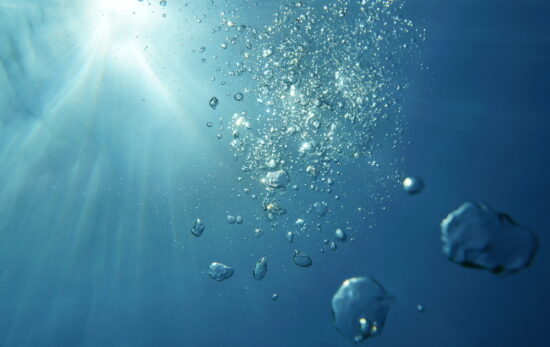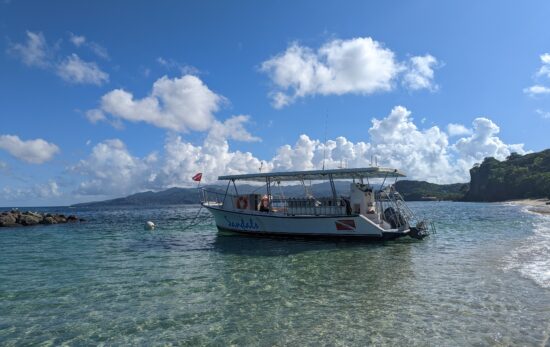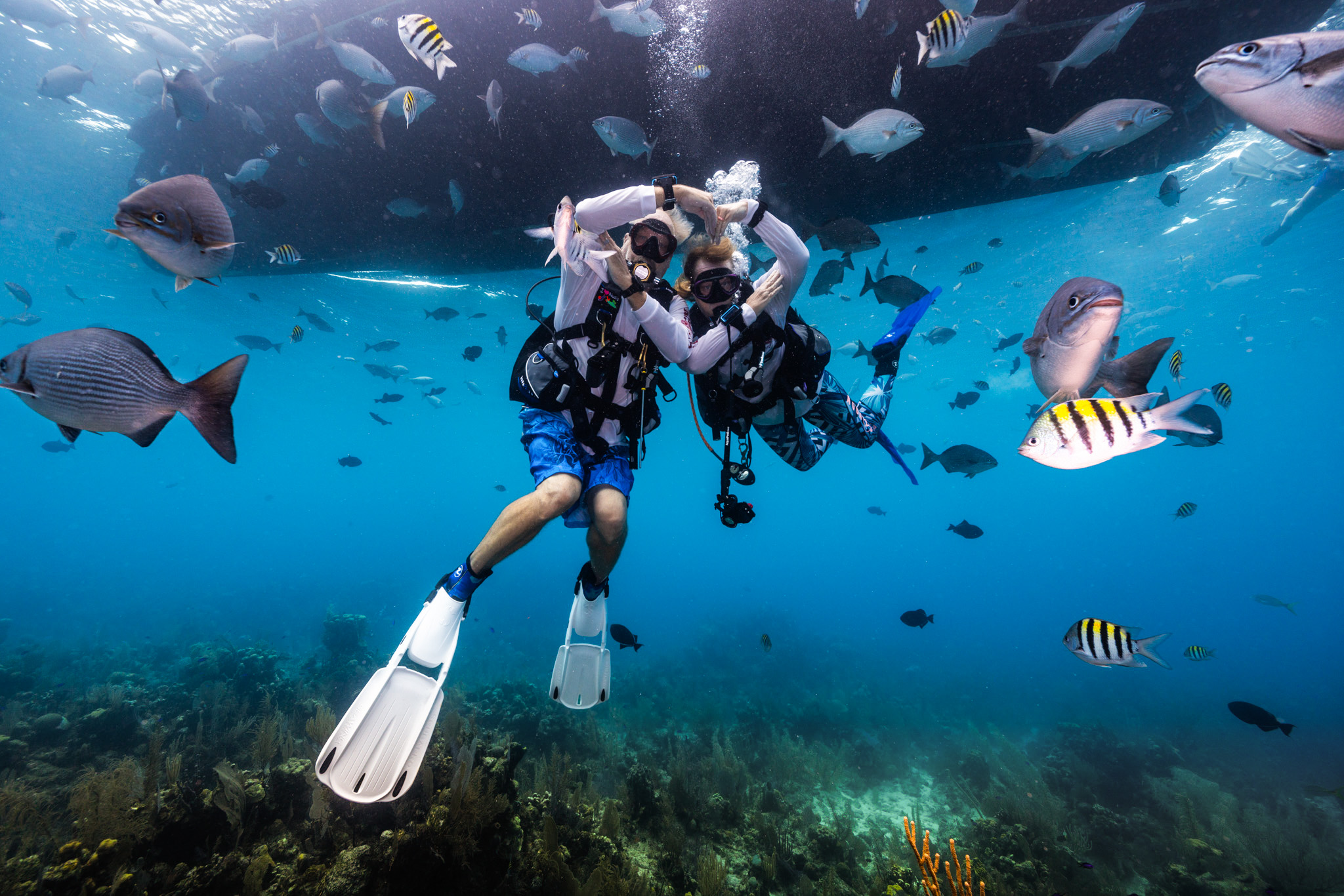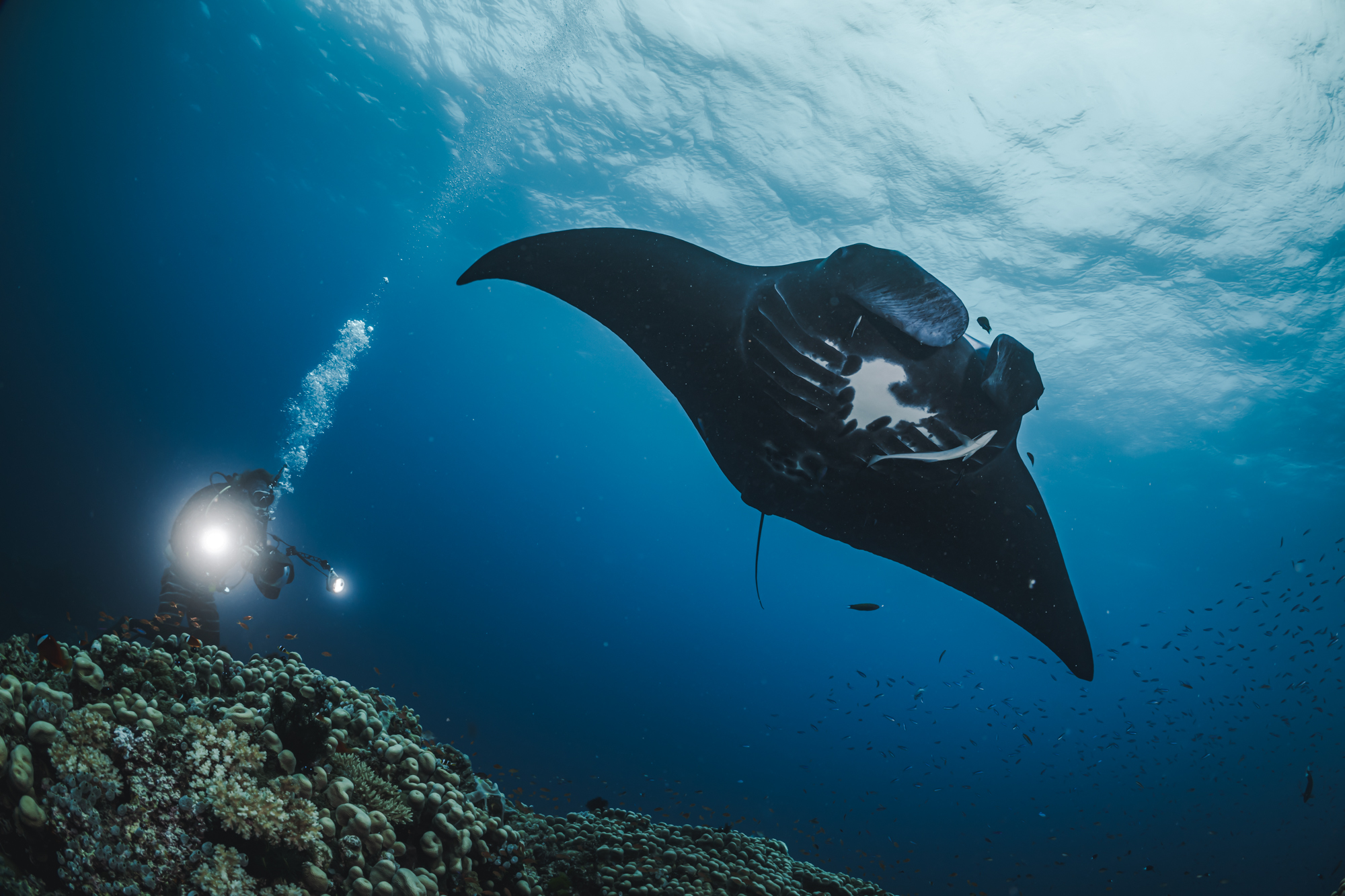Have you ever wondered how long freedivers hold their breath? Or how do they accomplish this? In this Blog, we take a look at the different levels of freediving and how long each level of freediver aims to breath-hold for – and how!
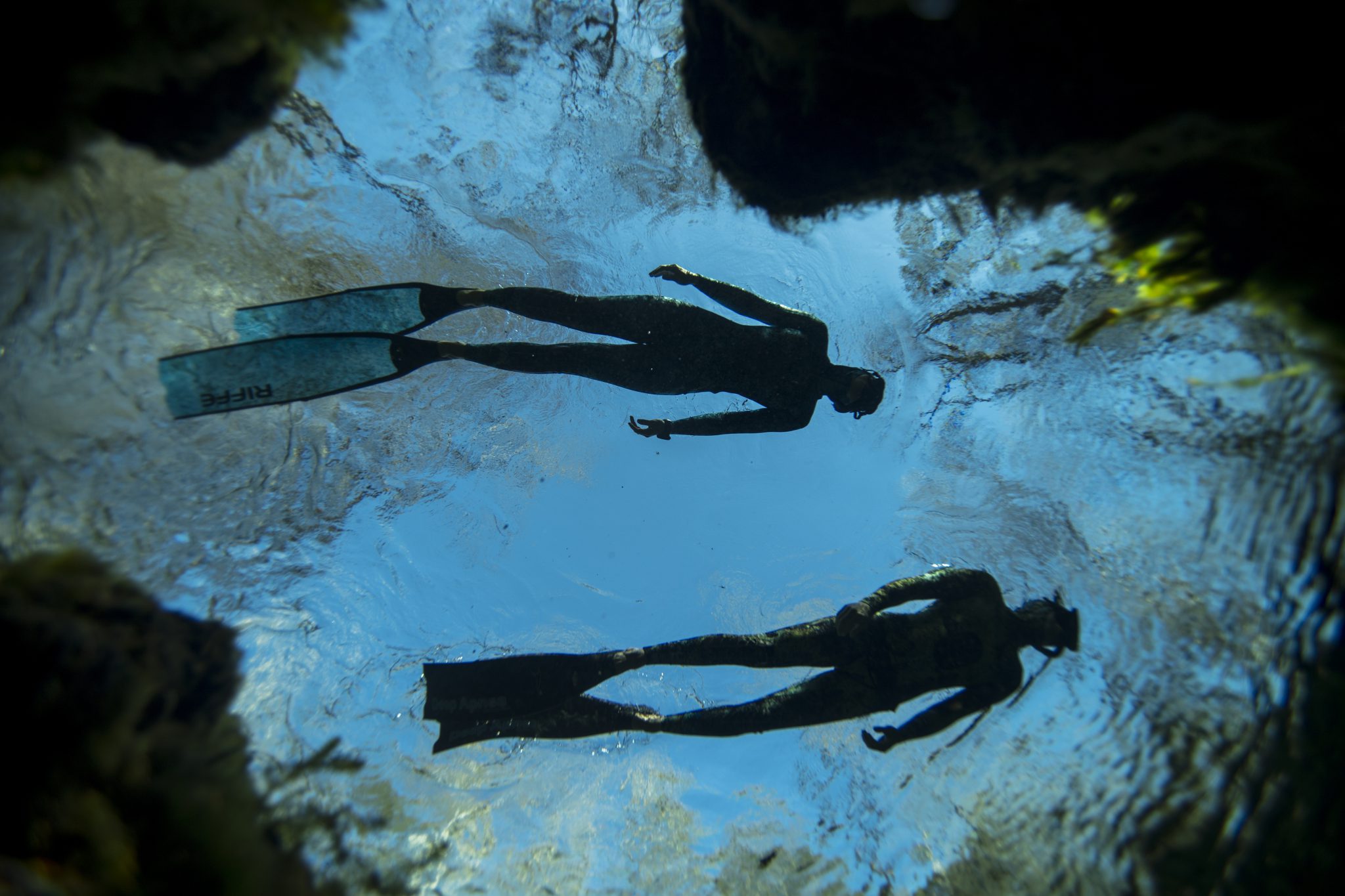
Definitions
It’s important to start with an understanding of the difference between static apnea and dynamic apnea. Static apnea is exactly as it sounds – breath-holding while static or stationary. Static apnea usually occurs in a pool with the freediver floating face down at the surface. Dynamic apnea is swimming horizontally on a single breath. The objective is distance and may be conducted with or without fins.
PADI Basic Freediver Course
The PADI Basic Freediver Course is the first level of certification, and it’s suitable for beginners and anyone aged 12 years or over. The Basic Freediver course occurs in a pool or confined open water (a body of open water that offers pool-like conditions).
So, how long do freedivers hold their breath in the basic freediver course? PADI Basic Freediver certification requirements state, in addition to knowledge development and the ability to swim, that students must make at least one static apnea attempt of at least 90 seconds, and one dynamic apnea must be at least 25 meters/80 feet. There are, of course, several other performance requirements that the student must also achieve that relate to safetying another freediver. Still, those aforementioned ones relate to the student’s own performance goals.
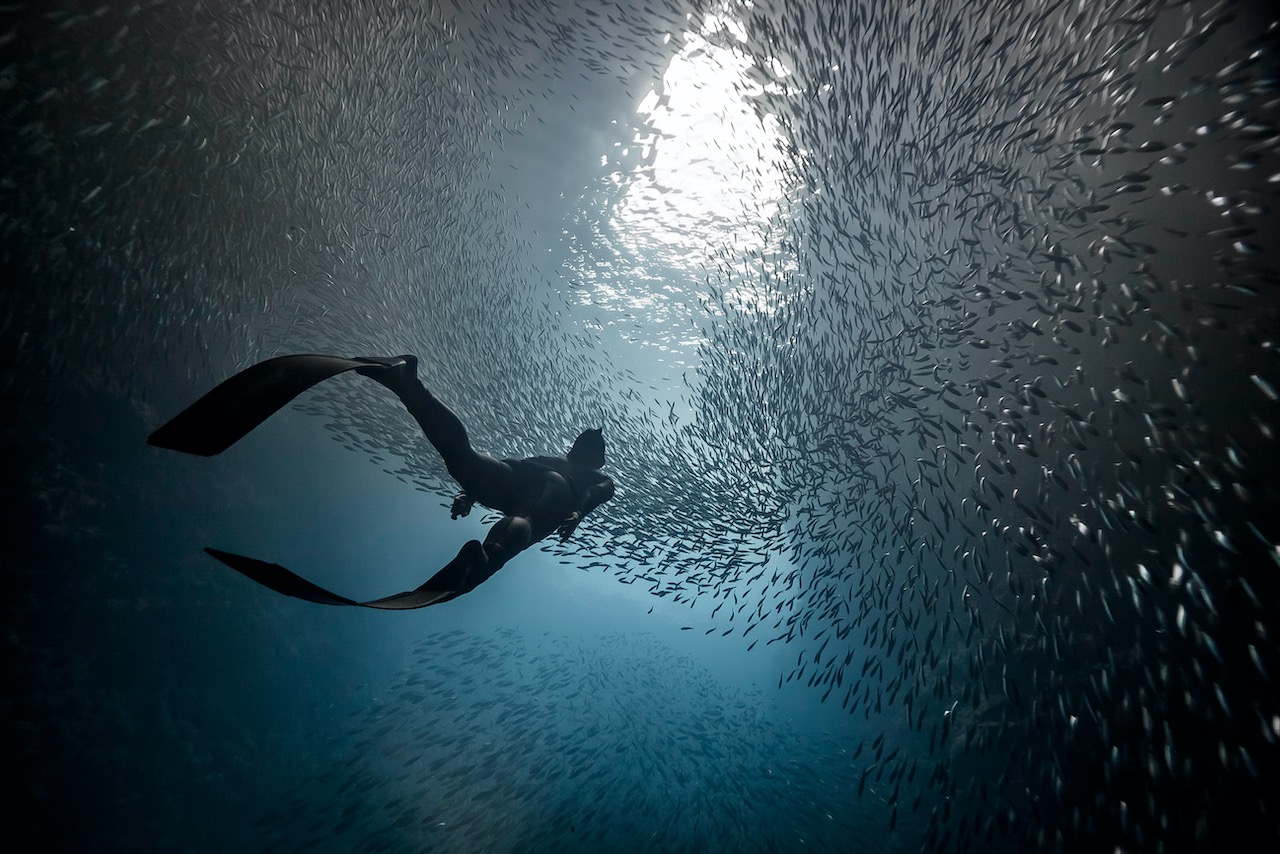
PADI Freediver Course
The PADI Freediver course introduces students to static, dynamic, and constant weight freediving knowledge and skills and can be taken by anyone who is at least 12 years old. The goals set out for Freedivers are as follows:
In addition to the certification requirements for the PADI Basic Freediver course, such as making one static apnea attempt of at least 90 seconds and one dynamic apnea of at least 25 meters/80 feet, students enrolled in the PADI Freediver course also complete at least two Open Water Sessions, during which they need to make one constant weight freedive to at least 10 meters/30 feet in addition to a number of other safety-related performance requirements.
PADI Advanced Freediver Course
The PADI Advanced Freediver course continues the development of freedivers who have mastered the fundamental knowledge and skills for static, dynamic, and constant weight freediving. It is intended for freediving enthusiasts who wish to progress by furthering their knowledge and skills. The PADI Advanced Freediver Course is available to anyone aged 15 years and over who is certified as a PADI Freediver.
Students complete the knowledge development, followed by the Advanced Freediver Confined Water Session and two Advanced Freediver Open Water Sessions. The certification requirements include one static apnea attempt of at least 2 minutes 30 seconds, and one dynamic apnea must be at least 50 meters/165 feet. (For freedivers younger than 18 – static apnea attempt of at least 2 minutes and dynamic apnea of at least 40 meters/130 feet.)
During the Advanced Freediver Open Water Sessions, students must complete one constant weight freedive to at least 20 meters/65 feet and meet several other performance requirements. (For Freedivers younger than 18 – constant weight freedive to at least 15 meters/50 feet, with a maximum of 20 meters/65 feet.)
PADI Master Freediver Course
The PADI Master Freediver Course is the pinnacle of certifications from the PADI Freediver Program! Of course, the goals set in the Master Freediver course are meant to challenge participants – but are completely achievable by those who undergo the program:
In addition to knowledge development and the Master Freediver Assignment, students complete at least one Confined Water Session, making one static apnea attempt of at least 3 minutes 30 seconds, and one dynamic apnea must be at least 70 meters/230 feet.
They also complete two Open Water Sessions, making one constant weight freedive to at least 32 meters/105 feet in addition to further refining their safety and rescue-related skills.
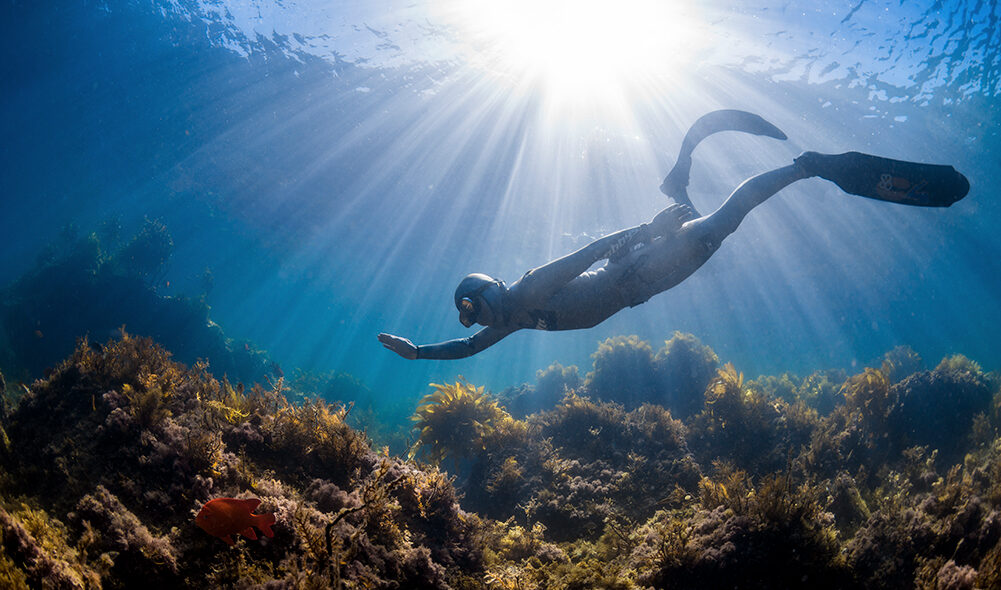
How Long Do Freedivers Hold Their Breath and How?
As we can see from above, a master freediver has a breath-holding goal of 3 minutes and 30 seconds. How is this possible?
The PADI Freediver program teaches participants how to hold their breath for extended periods. Breath-hold training includes an understanding of what triggers the body to breathe. Unknown to many people, the build-up of carbon dioxide in the body gives us the urge to breathe – not a lack of oxygen.
Several factors affect how long you can hold your breath underwater. These include your activity level, as exertion metabolizes oxygen and, in return, produces carbon dioxide. Freedivers try to relax and reduce activity as much as possible, and this is the key to extending your breath-hold time – learning to relax.
With training and practice, you’ll get better at relaxing your mind and body as well as learn how to become more efficient and use less energy in the water. Doing so means that you metabolize oxygen slower as well as become a little more carbon dioxide tolerant, and therefore you will be able to hold your breath longer.
In addition to learning relaxation techniques and movement efficiency, you will better understand how your diet, what you eat, and when you eat will affect your breath-hold performance.
Next Steps
If you are interested in freediving and want to get certified, start with the PADI Freediver Course. Check the link below to find a PADI dive shop near you!
Want more freediving tips for beginners? Check out this edition of the PADI Blog.

